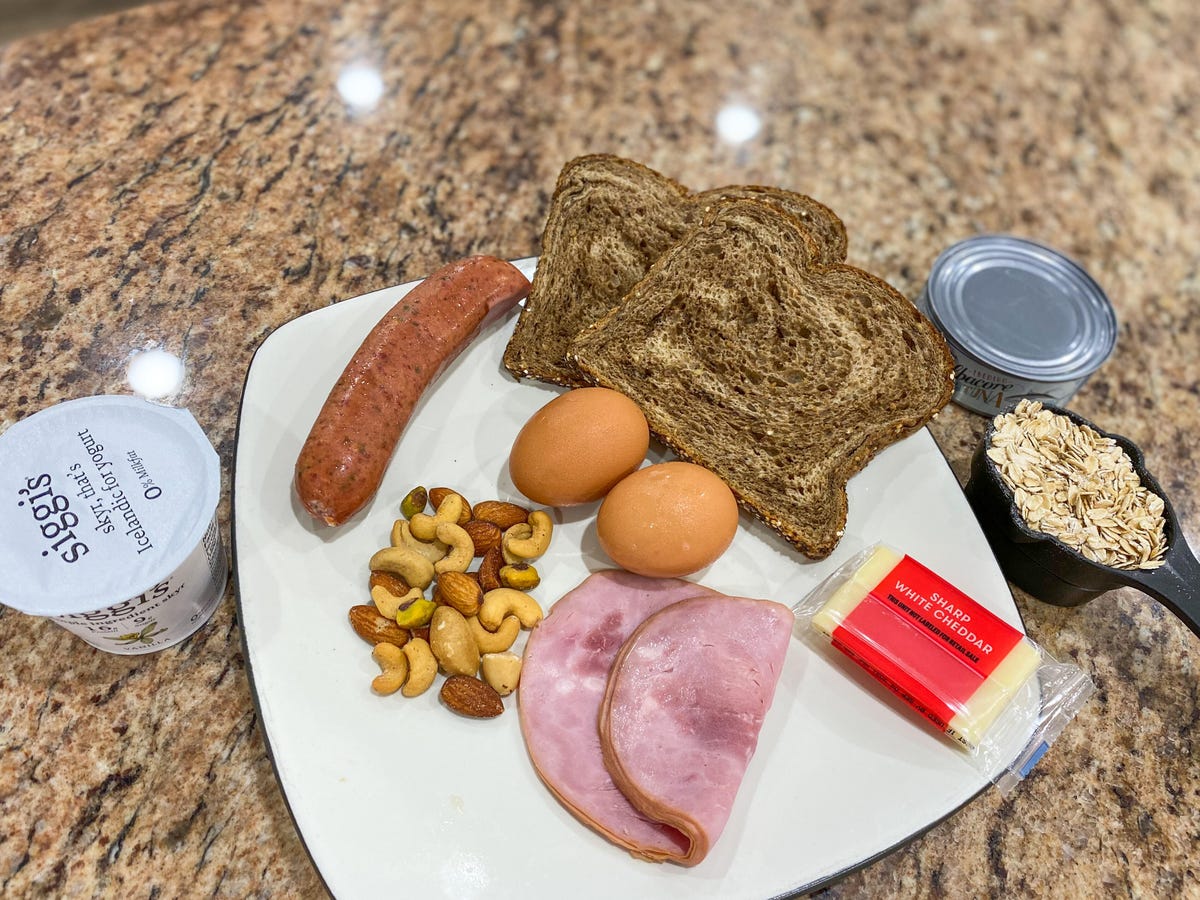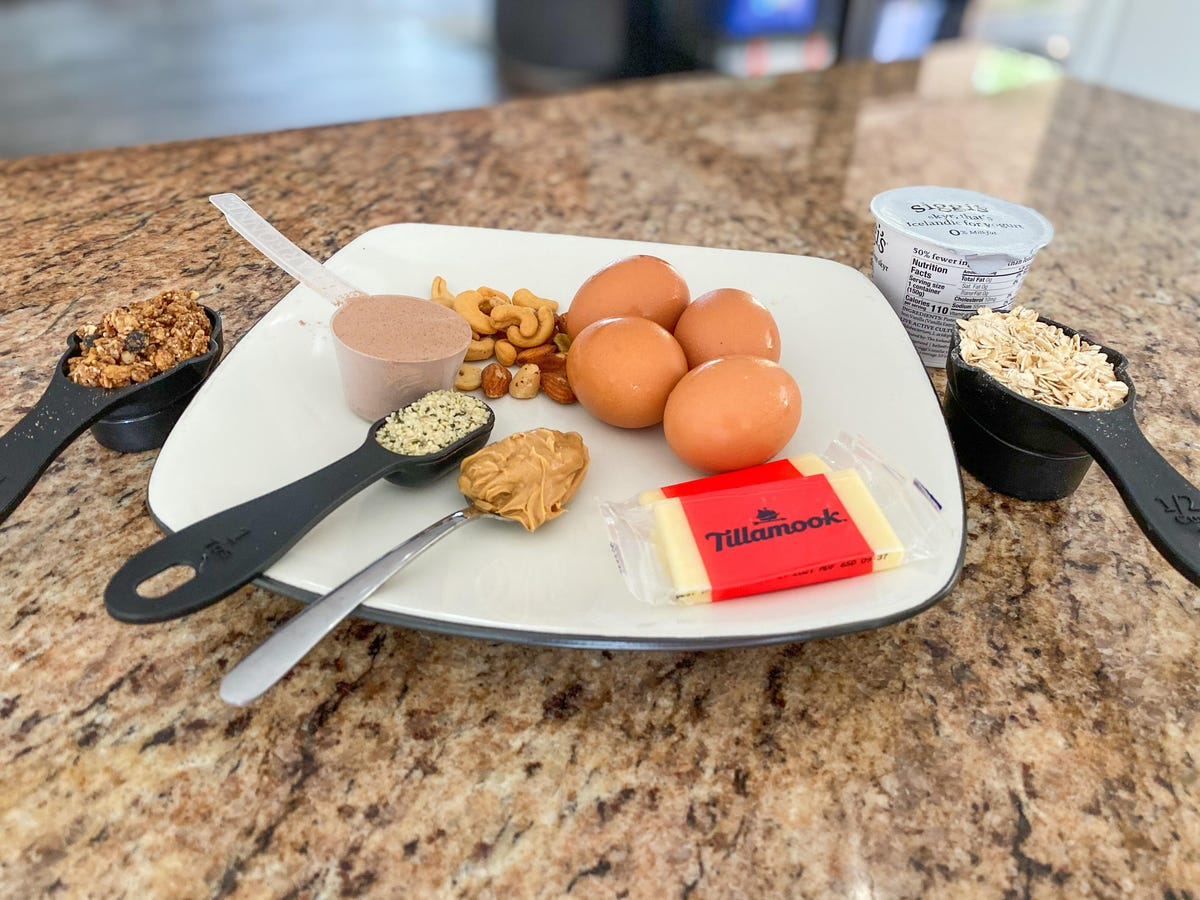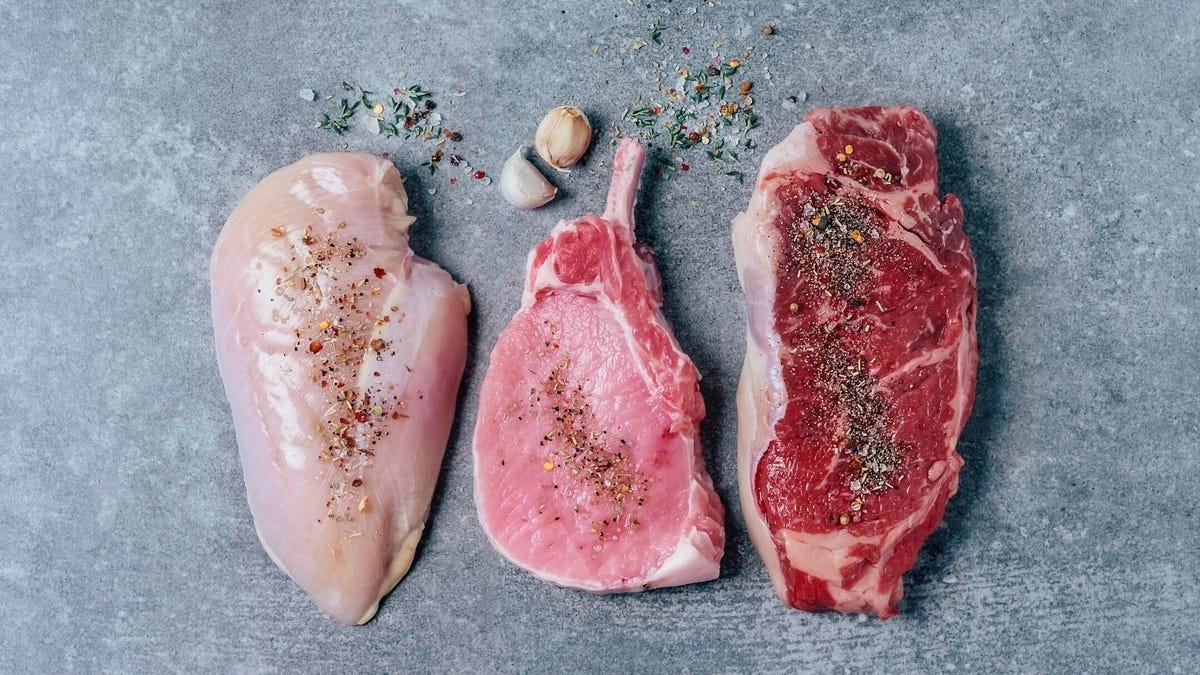Protein is having a big moment in the health world right now, and for good reason. Proteins play a role as enzymes in regulating hormones, transporting molecules, and chemical reactions. Therefore, it is important to meet the recommended daily amount. If you don’t know how much protein you should be consuming each day, we recommend that you start tracking your intake to make sure you don’t fall short.
A good way to determine how much protein you need each day is to first understand what a serving of protein is. Overall, dietary requirements vary from person to person, but 100 grams of protein per day is ideal for the average person. Keep in mind that if you are active, you may need more protein in your diet.
This visual guide shows you what 100 grams of protein looks like, whether you follow a vegan, vegetarian, or omnivorous diet.
Grams were calculated by taking information from the nutrition facts label of the packaged product and measuring weight where appropriate. The gram amounts listed in this guide are specific to the product used in this experiment, so you may see different numbers when looking at different brands of bread or yogurt.
Use this visual guide to better understand what 100 grams of protein will look like on your plate.
100 grams of omnivore protein

Consuming 100 grams of protein per day is very easy if you have no dietary restrictions. Here’s one of his methods:
- Greek yogurt (15 grams of protein)
- Beef sausage (14 grams)
- 1 ounce (5 grams) mixed nuts
- 2 eggs (12 grams)
- Snack cheese (5g)
- 4 slices (2 oz) of deli ham (10 grams)
- 2 slices of rye bread (10 grams)
- 1/2 cup (5 grams) rolled oats
- 1 can of tuna (27 grams)
The photos above all weigh 103 grams, just over my 100 grams goal.
100 grams of animal protein

As you can see, it doesn’t take long to get 100 grams of protein from animal foods. This photo shows:
- 4 eggs (24 grams of protein)
- 3 beef meatballs (15g)
- 2 slices (2 ounces) of turkey bacon (10 grams)
- 3 ounces (24 grams) turkey breast
- 1 can of tuna (27 grams)
This will be a full 100. If you eat all this in one day, plus bread and other non-animal foods, your daily protein intake will easily exceed 100 grams.
100 grams of vegetarian protein

For vegetarians, 100 grams of protein is:
- 4 eggs (24 grams of protein)
- 1/2 cup (5 grams) rolled oats
- 2 tablespoons (7 grams) peanut butter
- 1 tablespoon hemp seeds (4 grams)
- 1/4 cup (10 grams) protein granola
- 1 cup (20 grams) of vegetable protein powder
- 2 snack cheeses (10 grams)
- 1 serving of Greek yogurt (15 grams)
This actually works out to be 99 grams of protein, which is pretty close, but still a lot to consume in a day.
100g vegan protein

What you see is not exactly what you get in this photo. In the photo you can see:
- 1/4 cup protein granola (10 grams protein)
- 1 cup (20 grams) of vegetable protein powder
- 1 ounce (5 grams) nuts
- 2 tablespoons (7 grams) peanut butter
- 2 tablespoons chia seeds (about 10 grams)
- 1 tablespoon hemp seeds (4 grams)
- 2 slices of rye bread (10 grams)
- 1 protein granola bar (8 grams)
- 1/2 cup (5 grams) rolled oats
This equates to 79 grams of protein. Double the mixed nuts, chia seeds, and hemp seeds for 93 grams of protein. To get closer to your 100-gram goal, try adding a tablespoon of peanut butter or eating a full cup of oats instead of half a cup.
Also, this plate does not include high-protein vegan meat substitutes such as tofu, tempeh, or plant-based meats. Impossible Burger. Utilizing these food sources will make it much easier for him to get 100 grams of protein than someone who consumes protein. vegan diet.

